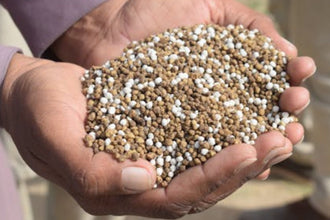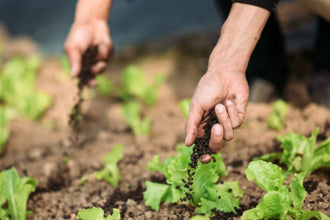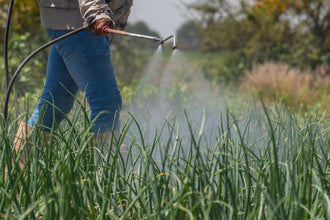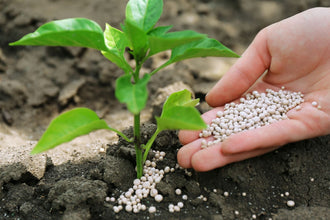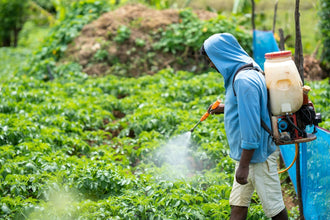Vegetable gardening can transform your backyard into a source of fresh and healthy produce. Cultivating a vegetable patch at home not only makes you a part of the sustainable living crowd. But it also saves money, offers you fresh produce and gives a sense of joy and accomplishment.
However, jump-starting your journey into vegetable gardening might be discouraging without understanding the basics first. Let's dive in and discover the simplicity and rewards of growing your food right at home.
Planning Your Vegetable Garden
When you start vegetable gardening, the first step is picking the best spot in your backyard. You want a place that gets plenty of sun, has good soil, and is easy to reach with water.
Next, think about how big your garden should be. Look at the space you have. Ask yourself, "How much can I handle?" and "What does my family like to eat?" Your garden size will depend on the answers to those questions.
Now, it's time to choose your veggies. Not all vegetables grow well everywhere. Think about your local weather and soil type. This helps you pick the right vegetables that will grow best in your garden.
Remember, good planning is key to making your vegetable gardening adventure a success. Keep it simple, start small, and enjoy the process.
Soil Preparation and Planting
For successful vegetable gardening, getting your soil ready is an important step. Here's how to do it:
- Test your soil to find out what nutrients it has and what it lacks.
- Clear the area of weeds and big rocks that can block your veggies from growing.
- Add compost to enrich the soil with nutrients that vegetables love.
- Loosen the soil to make it easy for roots to grow deep.
Understanding Planting Zones and Seasonal Timings
Your local climate affects when to plant. Knowing your planting zone helps you decide the best time to start your vegetable garden. This makes sure your veggies get the right amount of sun and warmth they need.
Techniques for Planting Seeds vs. Starter Plants
- Seeds:
- Start some seeds indoors in pots before the last frost date.
- Plant seeds at the depth listed on their packet.
- Water gently, but make sure the soil stays moist.
- Starter plants:
- Dig a hole big enough for the root ball.
- Gently remove the plant from its container and loosen the roots.
- Place it in the hole, fill it back with soil, and water it well.
Remember, vegetable gardening begins with good soil preparation and understanding the best planting techniques for your garden's success.
Maintaining Your Vegetable Garden
Keeping your vegetable garden healthy is simpler than you might think. Let's talk about watering, fighting weeds and pests, and how to choose fertilizers.
Watering: How Much and How Often?
Your vegetables need the right amount of water. Most of the time, an inch of water each week from rain or watering does the trick. Water the soil, not the plants, in the morning to make the most of it.
Controlling Weeds and Pests Organically
Organic methods can help you take care of weeds and pests safely:
- Pull weeds by hand before they get big.
- Use mulch to cover the soil and stop weeds from growing.
- Invite friendly bugs, like ladybugs, to eat harmful pests.
Fertilizing: Organic vs. Synthetic Options
- Organic fertilizers:
- Compost enriches the soil as it breaks down.
- Animal manures, like cows or chickens, are good natural fertilizers.
- Bone meal and blood meal add nitrogen and phosphorus.
- Synthetic fertilizers:
- Ready-to-use mixes offer specific nutrients.
- They can work faster but don’t improve soil over time.
In vegetable gardening, a little care goes a long way. Water wisely, control weeds and pests naturally, and choose the right fertilizer for a bountiful harvest.
Harvesting Your Crop
When you think about vegetable gardening, the part that probably excites you the most is the harvesting. After all, that's when all your hard work and patience pays off.
Signs Your Vegetables Are Ready to Harvest
Each vegetable has clues to tell you when it's ready. For example, tomatoes are easy – they're ripe when they're red all over. For others, like cucumbers and beans, if they feel firm and have reached their full size, it's time to pick them.
Tips for Harvesting and Storing Your Vegetables
When it comes to picking your veggies:
- Harvest in the morning when they are freshest.
- Be gentle to avoid injuring the plant or fruit.
- Use a sharp tool for veggies that don’t snap off easily.
After you harvest, storing properly is important:
- Many vegetables are kept best in a cool, humid place.
- Some, like potatoes and onions, like it dry.
- Others, like tomatoes, should stay at room temperature.
Remember, the joy of vegetable gardening truly comes full circle when you harvest your crops. So, watch for the signs, pick with care, and then store for freshness to enjoy the fruits of your labor.
Harvesting Your Crop
When you think about vegetable gardening, the part that probably excites you the most is the harvesting. After all, that's when all your hard work and patience pays off.
Signs Your Vegetables Are Ready to Harvest
Each vegetable has clues to tell you when it's ready. For example, tomatoes are easy – they're ripe when they're red all over. For others, like cucumbers and beans, if they feel firm and have reached their full size, it's time to pick them.
Tips for Harvesting and Storing Your Vegetables
When it comes to picking your veggies:
- Harvest in the morning when they are freshest.
- Be gentle to avoid injuring the plant or fruit.
- Use a sharp tool for veggies that don’t snap off easily.
After you harvest, storing properly is important:
- Many vegetables are kept best in a cool, humid place.
- Some, like potatoes and onions, like it dry.
- Others, like tomatoes, should stay at room temperature.
Remember, the joy of vegetable gardening truly comes full circle when you harvest your crops. So, watch for the signs, pick with care, and then store for freshness to enjoy the fruits of your labor.
Common Challenges and Solutions
In vegetable gardening, you'll likely face a few common problems. But don't worry! There are straightforward solutions to these challenges.
Dealing with Pests and Diseases
Pests and diseases can be a real headache, but here's how to handle them:
- Inspect your plants regularly for early signs of trouble.
- Use natural enemies, like ladybugs for aphids, to control pests.
- Remove and destroy any diseased plants to prevent the spread.
Addressing Common Soil and Watering Issues
Soil and water are the lifelines of your garden, but issues can arise:
- If your soil is too sandy or too clay-heavy, mix in compost to improve its quality.
- Make sure your garden has good drainage. Raise your garden beds if necessary.
- Water your plants in the early morning so the soil absorbs moisture better.
Remember, in vegetable gardening, facing challenges is part of the process. With these solutions, you can keep your garden healthy and thriving.
Key Takeaways
Vegetable gardening can seem like a big task if you're just starting. But remember, every gardener was a beginner once. Don't be afraid to start small and learn as you go. The important thing is to begin! The joy and satisfaction of seeing your first seed sprout, your first flower bloom, and your first vegetable ripen can't be matched.
There’s something special about eating food you've grown yourself. It tastes better not just because it's fresh but because you know the effort that went into growing it. So, give vegetable gardening a try. With a little patience and care, you'll be amazed at what you can grow. Remember, gardening is a journey, not a race. Enjoy every step, and take pride in what you accomplish.
If you're looking to enrich your soil to produce even healthier and more bountiful crops, consider Fancy Chicken Manure. This high-quality, organic fertilizer can give your vegetable garden that extra boost it needs. Don’t miss out on the chance to supercharge your garden’s growth. So why wait? Give Fancy Chicken Manure a try and see the amazing difference it can make in your vegetable gardening journey.



